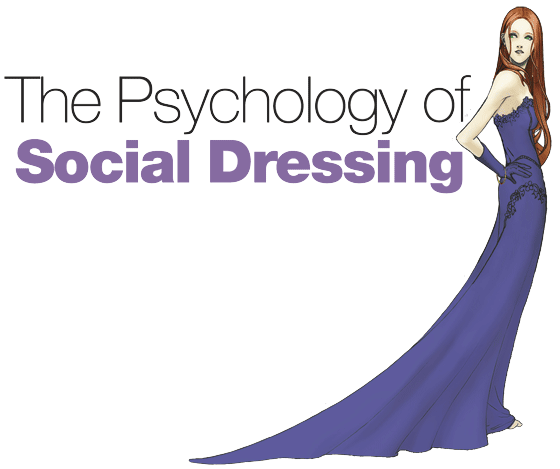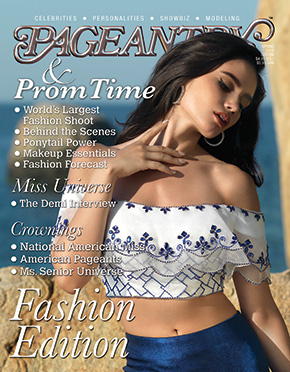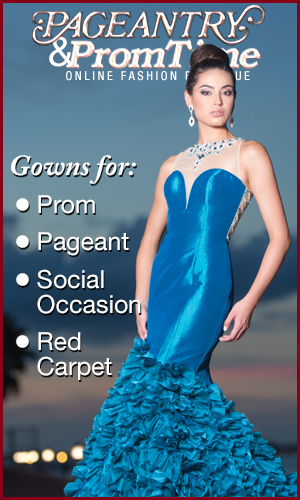


|

|
There’s science behind the impressions we make, and no matter what the occasion, knowing those
unconscious signals can help you make smart wardrobe choices. |
Getting an invitation to a social event can be fun, but what’s the first thing that comes to mind when you open the invitation and the dress code reads, “Formal,” “Semi-formal,” “Upscale Casual,” “Casual,” “Cocktail,” “After Five,” “Business Attire,” “Diamonds and Denim,” “Pretty in Pink,” “Glamorous,” “Simply Sexy” — the list goes on. The request for attire can become inspired by the season, various colors, cultural activities, sports events, or the hottest Hollywood movies. What’s with all the dress codes, anyway? Why must people put so much emphasis on what to wear? The audacity of our friends to tell us how we should dress!
Does it really matter what you wear to an event or social gathering? You bet it matters. For centuries individuals or societies have used clothes and other body adornment as a form of nonverbal communication to indicate occupation, rank, gender, sexual availability, locality, class, wealth, and group affiliation. Fashion is a form of free speech that not only embraces clothing, but also accessories, jewelry, hairstyles, and body art. What we wear and how and when we wear it provides others with a shorthand to subtly read the surface of a social situation.
First Impressions
First impressions are a part of life, and 90 percent of that impression is communicated through our appearance. Our clothes, grooming, hairstyle, and body language — all visual elements — give clues as to how we feel about ourselves and others. American humorist Will Rogers once said, “You never get a second chance to make a first impression.” How long does it take to make a first impression on someone? Just four seconds! That’s another reason why how you dress matters. Although first impressions are often wrong, psychologists have found that they are very hard to change, particularly a visual impression. Behavioral scientists tell us that the process of sizing someone up is made on a subconscious/emotional level of the brain. The evaluation can be so strong that it could take as much as five years to erase.
Research studies have shown that well-dressed people are judged to be more qualified and likable than those who are not. Well-dressed people are generally treated with more respect and are given greater social and business opportunities. They are perceived to be more “legitimate” if they are dressed appropriately.
General Rules To Dress By
So how do these psychological concepts play out in practice during the important prom and social occasion seasons? In other words, what are the rules of the game? The number one rule is keep your outfit appropriate and take the opportunity to review your style in keeping with current fashion trends. Being out of fashion lets everyone know that you aren’t in the know, and probably leads them to assume you’re not someone they need to spend time getting to know. The number two rule is to decide how prominent a role you are likely to play at the event. In other words, might you be a spotlight star accepting a prom queen prize? Will you be making a speech or a toast? If the latter, you may need extra confidence when all eyes are on you. For that you will need the perfect dress.
Determining what is appropriate is fairly straightforward. A “formal” or white-tie dress code typically means tail-coats for men and full-length evening dresses for women. “Semi-formal” has a much less precise definition but typically means an evening jacket and tie for men (known as black-tie) and a dress for women. “Lounge suit” or “business casual” typically means not wearing jeans or track suits, but wearing instead collared shirts, and more country trousers (not black, but more relaxed, including things such as corduroy). “Casual” typically just means pretty much any style of clothing for the torso and legs, and shoes.
Style Vocabulary
If it is agreed that our clothing speaks volumes about us, it is important to determine what a particular style of dress or clothing will communicate about you for the situation. Is your outfit sending an accurate message about you for the event or social gathering at hand? If not, you will risk being misunderstood or even dismissed by the very people you had hoped to meet and get to know. Dressing badly can be taken as contempt for other people or the situation you are in. Clothing is a way to show others that you have respect and consideration for them.
As a practical matter, your careful clothing choices will also ensure a relaxing evening, which will allow you to be seen in the most favorable light. Conversely, a strapless dress with the wrong kind of support can make for a night of nervous energy and constant fidgeting, while heels that are simply too high can make movement next to impossible and a short dress can make it difficult to sit down during dinner. Always shop for a dress that suits your personality, and try to purchase it early in case you need to make adjustments or alterations.
The Total Package
|
|
| |
 |
|
For the complete behind-the-scenes story and all the details on this and other exciting competitive events from across America, as well as a wealth of advice to improve your chances of victory, be sure to Order Pageantry today. |
|
| |
| |
w
|



YOU CAN GET IT ALL!
Click and see for yourself!

|
|
